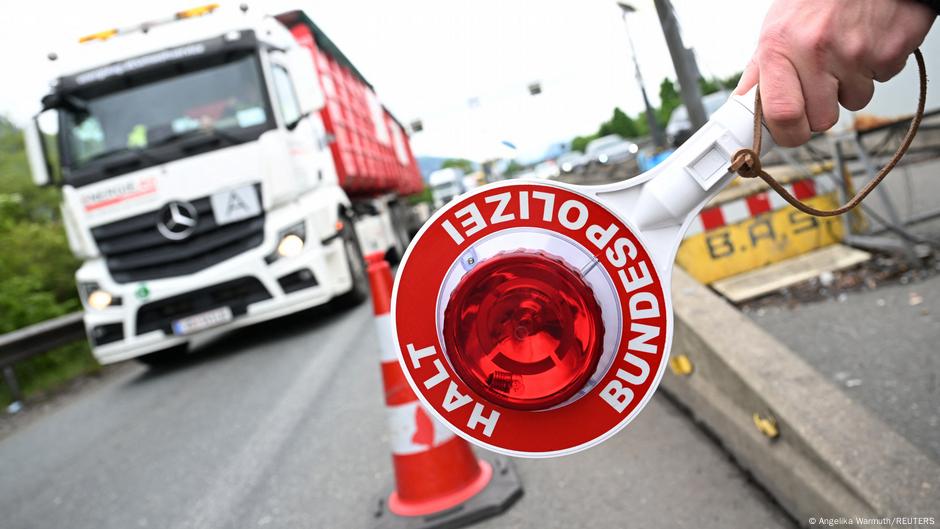The Resurgence of Border Controls in Europe
Border controls are making a comeback across Europe, a region once celebrated for its free-travel zone. This development raises questions about whether these measures are actually addressing the underlying issues or merely serving as political symbols.
Poland’s New Measures and Broader Trends
Poland recently introduced border checks with Germany and Lithuania, marking another instance of a Schengen country implementing such steps. These actions are typically justified as necessary to curb irregular migration, combat human smuggling, or address national security concerns. However, many analysts see this as a sign that the European Union’s borderless travel area, symbolizing integration and common identity, is under strain.
Polish Prime Minister Donald Tusk described the controls as temporary, aimed at stopping human trafficking and irregular migration. Yet, this move follows Germany’s recent increase in border checks along all its land borders, including with Poland, under the new conservative government of Chancellor Friedrich Merz. For observers in Brussels, these tit-for-tat measures reflect a shift toward national self-interest rather than European solidarity.
Understanding the Schengen Area
Established in the 1990s, the Schengen Area allows passport-free travel across 29 European countries, including most EU members and non-members like Norway and Switzerland. It facilitates the free movement of over 450 million people and supports Europe’s single market by eliminating internal border checks for goods, services, and labor. For businesses, commuters, and travelers, Schengen is one of the EU’s most practical achievements.
In an interview, Birte Nienaber, an Associate Professor at the University of Luxembourg, highlighted the slow erosion of border-free movement in Europe, one frontier at a time.
A Domino Effect Underway
Davide Colombi, a migration researcher at the Centre for European Policy Studies (CEPS) in Brussels, agrees that the recent Polish-German dispute fits a broader European pattern. France has maintained border checks since the 2015 terrorist attacks. Austria first introduced controls on its borders with Slovenia and Hungary in 2015, and has renewed them every six months since, citing migration pressures and internal security.
Slovenia introduced checks with Croatia less than a year after the latter joined Schengen, citing increased migration and concerns over organized crime. Germany, which had long resisted tightening its internal borders, began expanding them last autumn, a move the European Commission has not formally challenged. Under EU law, such checks are only allowed in exceptional circumstances and must be temporary.
Political Symbolism Over Substance
These border controls are often seen as political symbolism without real effects on curbing migration, according to Professor Nienaber. She notes that the rise of far-right forces in Europe has led to populist narratives gaining ground across all parties. Centrist leaders face pressure to show “toughness” on migration — and border controls are a visible measure popular with the public.
Official statistics cast doubt on the effectiveness of border checks inside the Schengen area. German police reported that in the first month of enhanced border operations this spring, just 160 asylum seekers were turned away. Polish media reports that Germany returned around 1,000 migrants to Poland between May and mid-June, a figure not significantly different from previous years.
Smugglers or those trying to enter irregularly know how to avoid official checkpoints, said migration expert Nienaber. “The controls don’t stop them. They only create the illusion of control.”
Economic Costs and Disruptions
Border communities, especially in regions like Luxembourg, Austria, and Poland, are already feeling the negative effects: longer wait times, disrupted supply chains, and growing economic stress on cross-border local businesses. A detailed European Parliament study estimated that reinstating internal border checks leads to substantial time losses: 10–20 minutes for cars and 30–60 minutes for heavy vehicles, and costs the transport sector around €320 million — and that’s only accounting for delays, not the broader economic fallout.
The economic cost is therefore not trivial. Schengen affects the free movement of goods, services, capital, and people: the four pillars of the EU single market. Prices could rise, supply chains could slow, and cross-border jobs and businesses could be lost.
Legal Limits and Bypassed Rules
EU law allows internal border checks in exceptional cases: they must be limited to six months with clearly justified renewals. Yet several member states have simply continued extending them. France’s controls have been in place almost continuously for nearly a decade. Austria, Denmark, Sweden, and now Germany have also operated under long-term exceptions.
“We can see that these border checks are becoming permanent in some member states. That was never the intent of the Schengen agreement,” says researcher Colombi. He explains that the European Commission has faced criticism for not enforcing limits more robustly, for instance through infringement procedures. This could risk opening the floodgates for others, creating a domino effect.
Revising Schengen or Abandoning It?
The EU and its leaders are aware of the risks. If internal border checks become permanent, the Schengen system could unravel entirely. This would not only disrupt the free movement of people, goods, services, and capital, key pillars of the EU single market, but also undermine the legal integrity of EU treaties, increase costs for businesses, slow supply chains, potentially erode citizens’ trust in the European project itself.
The Commission is now working to update the Schengen Borders Code and launch two digital border management tools: the Entry/Exit System (ESS) and the ETIAS, a visa-waiver screening platform. Both are designed to better track non-EU nationals entering the zone and reduce the perceived need for internal checks.
The Commission says these reforms represent an evolution of Schengen, not its breakdown. But Colombi argues that if Schengen is to survive, it will need more than legal tweaks or digital tools. Rather, he says, “we need political courage, the rebuilding of mutual trust between member states and enforcement by the European Commission.” Above all, the subject of migration should be de-politicized, shifting the public debate away from ineffective measures such as border controls.
What’s at Stake
Should Schengen fall apart, the economic damage could be severe. Reinstated border checks would slow down the flow of goods, disrupt just-in-time supply chains, and increase transport costs, particularly in logistics-heavy sectors like agriculture, retail, and manufacturing. Cross-border workers would face longer commutes, while small businesses in border regions could lose vital customers. For everyday citizens, it could mean longer queues at borders, higher prices in stores, and diminished access to services and job markets across borders.
But the symbolic loss could be just as profound, says Colombi: “Schengen is one of the most visible signs of a common European identity and a flagship achievement.” Should Schengen fall, it’s most tangible way to experience the EU as a transnational project for citizens would fall, too.
To prevent that, both experts argue that the EU and its member states must recommit to the core idea behind Schengen: that Europeans should be able to move freely, without fear, delay, or political posturing, across their shared continent.







